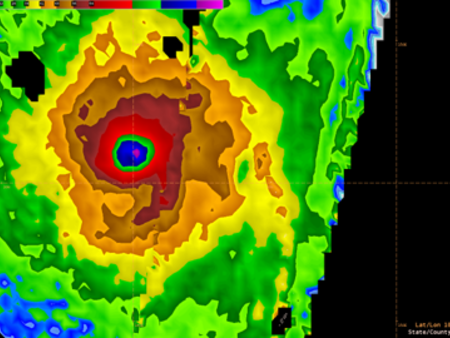What is a hurricane, typhoon, or tropical cyclone?
Contributed by C. Landsea (NOAA/National Hurricane Center): see http://www.aoml.noaa.gov/hrd/tcfaq/tcfaqHED.html
The terms "hurricane" and "typhoon" are regionally specific names for a strong "tropical cyclone".
A tropical cyclone is the generic term for a non-frontal synoptic scale low-pressure system over tropical or sub-tropical waters with organized convection (i.e. thunderstorm activity) and definite cyclonic surface wind circulation (Holland 1993).
Tropical cyclones with maximum sustained surface winds of less than 17 m/s (34 kt, 39 mph) are usually called "tropical depressions" (This is not to be confused with the condition mid-latitude people get during a long, cold and grey winter wishing they could be closer to the equator ;-)). Once the tropical cyclone reaches winds of at least 17 m/s (34 kt, 39 mph) they are typically called a "tropical storm" or in Australia a Category 1 cyclone and are assigned a name. If winds reach 33 m/s (64 kt, 74 mph), then they are called:
- "hurricane" (the North Atlantic Ocean, the Northeast Pacific Ocean east of the dateline, or the South Pacific Ocean east of 160E)
- "typhoon" (the Northwest Pacific Ocean west of the dateline)
- "severe tropical cyclone" or "Category 3 cyclone" and above (the Southwest Pacific Ocean west of 160°E or Southeast Indian Ocean east of 90°E)
- "very severe cyclonic storm" (the North Indian Ocean)
- "tropical cyclone" (the Southwest Indian Ocean)


